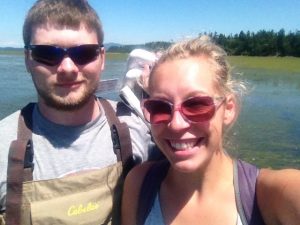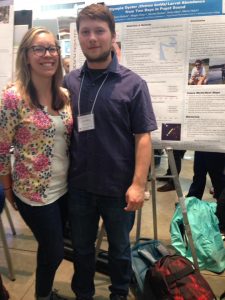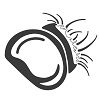It has been a crazy past couple of quarters in the Becker lab, everyone is working so hard!
 I have been conducting hand count identification on the plankton samples that we collected in the summer of 2015 from our two main sampling sites, Fidalgo Bay in northern Puget Sound and Mud Bay in central Puget Sound. We spent all summer sampling from numerous bays up and down the Puget Sound. We put out spat collectors at low tide in every site to catch seeding larvae over the course of the summer, and we sampled over 14,000 Olympia oysters via nondestructive relaxation baths where we collected brooding larvae from the mother oyster.
I have been conducting hand count identification on the plankton samples that we collected in the summer of 2015 from our two main sampling sites, Fidalgo Bay in northern Puget Sound and Mud Bay in central Puget Sound. We spent all summer sampling from numerous bays up and down the Puget Sound. We put out spat collectors at low tide in every site to catch seeding larvae over the course of the summer, and we sampled over 14,000 Olympia oysters via nondestructive relaxation baths where we collected brooding larvae from the mother oyster.
After a long summer of sampling came the laborious task of identifying larval bivalves, but a rewarding task none the less! I learned how to identify different bivalves within the water column and also had the opportunity to develop my own methods of counting and identification. Along with some innovation in creating a polarized microscope to help identify the bivalves.
Once the identification and counting was completed the data was compiled into graphs so that we can see if there was Olympia oysters in the water and get an idea of where they were in the tides. My methods, data, and results were combined in a poster where I presented my findings at three different conferences, the Salish Sea Conference in Vancouver, BC; the Undergraduate Research Symposium at UW Seattle, and the UW Tacoma Environmental Research Symposium (UWaTERS). All of which were great experiences to network with other scientists and present my data to my fellow peers in a professional manner.
 My next steps now are in progress as we are currently working on developing methods for running quantitative Polymerase Chain Reaction (qPCR) on the other two replicates of plankton samples that I have hand counted. This will give me alternate data to validate both methods of counting larvae in the water column.
My next steps now are in progress as we are currently working on developing methods for running quantitative Polymerase Chain Reaction (qPCR) on the other two replicates of plankton samples that I have hand counted. This will give me alternate data to validate both methods of counting larvae in the water column.
I’m excited to be moving along with the Becker lab and can’t wait to see what awaits for me around the corner!
(NOTE: Stay tuned for Axton’s guide to visually identifying bivalve larvae. Coming soon!)
